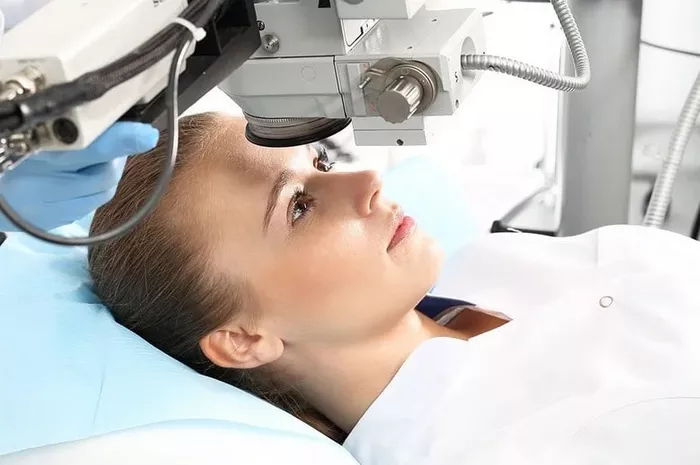Under eye bag surgery, also known as lower blepharoplasty, is a cosmetic procedure designed to reduce the appearance of bags and puffiness beneath the eyes. This procedure can significantly improve the aesthetic appearance of the under-eye area, but many prospective patients have concerns about its safety. In this comprehensive article, we will explore the safety of under eye bag surgery, covering various aspects including the procedure, risks, recovery, and long-term outcomes.
Introduction to Under Eye Bag Surgery
Under eye bag surgery involves the removal or repositioning of excess fat and skin from the lower eyelids. This surgery aims to correct the sagging and puffiness that can make individuals look tired or aged. The procedure can be performed using several techniques, including traditional blepharoplasty, transconjunctival blepharoplasty, and laser-assisted blepharoplasty. Each technique has its advantages and potential risks.
Understanding the Procedure
Traditional Blepharoplasty
Traditional blepharoplasty involves making an incision just below the lower lash line. The surgeon removes or repositions excess fat and skin through this incision. This technique is effective for patients with significant skin sagging and fat bulging.
Transconjunctival Blepharoplasty
In transconjunctival blepharoplasty, the incision is made inside the lower eyelid, which leaves no visible scars. This method is suitable for patients with primarily fat protrusion and minimal skin excess.
Laser-Assisted Blepharoplasty
Laser-assisted blepharoplasty uses a laser to make incisions and remove excess skin. This technique can reduce bleeding and swelling, leading to a faster recovery compared to traditional methods.
Pre-Operative Considerations
Before undergoing under eye bag surgery, patients must have a thorough consultation with their surgeon. This consultation typically includes:
Medical History Review: The surgeon will assess any pre-existing conditions, medications, and allergies.
Physical Examination: The surgeon will evaluate the extent of under-eye bags and overall eye health.
Discussion of Expectations: Patients will discuss their goals and expectations to ensure that the procedure aligns with their desired outcomes.
See Also: Laser Eye Surgery: Is It Safe?
Potential Risks and Complications
Like any surgical procedure, under eye bag surgery carries risks. Some potential risks and complications include:
Common Risks
Swelling and Bruising: These are common post-operative effects that typically subside within a few weeks.
Dry Eyes: Some patients may experience dryness or irritation, which can be managed with artificial tears.
Uncommon Risks
Infection: Although rare, infections can occur and may require antibiotic treatment.
Scarring: While surgeons aim to minimize visible scarring, some patients may develop noticeable scars.
Vision Changes: Temporary vision disturbances can occur but are generally resolved as healing progresses.
Serious Complications
Bleeding: Excessive bleeding can occur but is usually controlled during surgery.
Eye Damage: In rare cases, damage to the eye or surrounding structures can occur, requiring further intervention.
Post-Operative Care and Recovery
Proper post-operative care is crucial for a smooth recovery and optimal results. Patients should follow their surgeon’s instructions, which may include:
Rest and Elevation: Keeping the head elevated helps reduce swelling.
Cold Compresses: Applying cold compresses can alleviate swelling and discomfort.
Medications: Pain relievers and antibiotics may be prescribed to manage pain and prevent infection.
Follow-Up Visits: Regular check-ups ensure proper healing and address any concerns.
Typical Recovery Timeline
First Week: Swelling and bruising are most pronounced. Patients should avoid strenuous activities and adhere to prescribed care routines.
Two to Four Weeks: Bruising and swelling gradually decrease. Most patients return to work and normal activities, though some residual swelling may persist.
One to Three Months: The final results of the surgery become apparent as healing continues and any residual swelling subsides.
Long-Term Outcomes
Under eye bag surgery can produce long-lasting results, often improving the appearance of the lower eyelids for several years. However, natural aging and lifestyle factors can influence the longevity of the results. Maintaining a healthy lifestyle, including proper skin care and avoiding excessive sun exposure, can help extend the benefits of the surgery.
Choosing a Qualified Surgeon
The safety and success of under eye bag surgery largely depend on selecting a qualified and experienced surgeon. Prospective patients should consider the following when choosing a surgeon:
Board Certification: Ensure the surgeon is board-certified in ophthalmology or plastic surgery.
Experience: Choose a surgeon with extensive experience in performing under eye bag surgeries.
Patient Reviews: Read reviews and testimonials from previous patients to gauge the surgeon’s reputation and patient satisfaction.
Conclusion
Under eye bag surgery, or lower blepharoplasty, is a generally safe and effective procedure for reducing under-eye bags and puffiness. While there are risks and potential complications associated with the surgery, these can often be managed with proper pre-operative planning, careful surgical techniques, and diligent post-operative care. By selecting a qualified surgeon and adhering to recommended care practices, patients can achieve satisfactory results and enhance their overall appearance.
If you are considering under eye bag surgery, it is essential to have a thorough discussion with a qualified cosmetic surgeon to determine if the procedure is right for you and to understand the associated risks and benefits.
Related topics:

